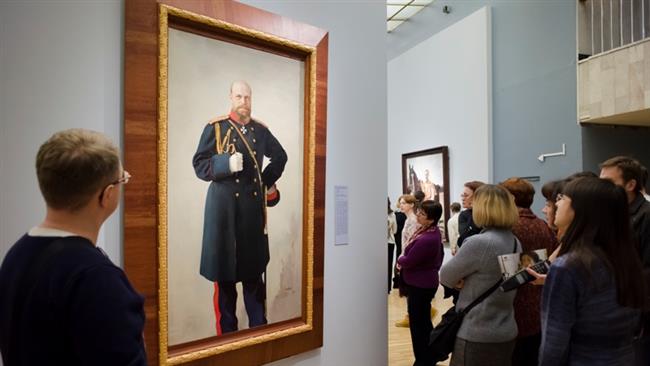
Note from the editors: The following piece is scheduled to appear in the edited collection The Art of Civil Action, edited by Philipp Dietachmair and Pascal Gielen and published through Valiz in November 2017.
Today, it is common to contrast the statism of today’s Russia with the Western neoliberal order, which is based on the primacy of political and economic freedom. European journalists and experts discuss Putin’s Russia as though it were a revisionist state that is not only ready for military aggression but is also driven by internal destructive forces: a “populist international” of right and left parties, attacking an imaginary “establishment.”[i]
Indeed, the idea of Russia’s “special path”, one that distinguishes it from Western Europe, has throughout recent years been one of the main elements of Kremlin propaganda within Russia. In countless public appearances and official documents, the authority’s representatives (including President Putin) have reaffirmed this difference between Western “individualism” and Russian “collectivism”. The latter is widely presented as prioritizing common interests over personal ones, a theme that continues to be one of the principal components of the Russian “cultural code”.[ii] However, this “collectivism”, contrasted with materialistic egoism, appears not only as specifically Russian, but also as a universal part of the corpus of “traditional values”. In defending these values, Russia not only struggles for its own sovereignty but also reminds the West of its own Christian heritage.
Nevertheless, the conservative rhetoric holding sway in Russia today, including attacks on market “individualism”, is organically combined with neoliberal practices in the Kremlin’s socio-economic policies. Isolationism, clericalism and authoritarian political methods do not meaningfully contradict the neoliberal principles of subordinating all spheres of social life to the logic of competition and market effectiveness, but create an overall hybrid ideological construct.[iii]
The cultural domain in Russia in recent years has been both the place in which this hybrid ideology has been produced and the place of its application. The growth of ideological pressure on state cultural institutions has been combined with the active introduction of the principles of “economic austerity” and the model of “public-private partnership”. This situation creates a new challenge for those working in the cultural domain, who must defend their independence in the face of conservative ideological offensives and the logic of the market, guided in equal measure by an authoritarian state. Below, I intend to analyse the particular features of Russian authoritarian neoliberalism’s cultural politics, the changing place of contemporary art in the existing ideological set-up, and also the possibilities for new points of resistance for cultural workers in Russia.
The Logic of the Swing Towards Conservatism
The beginning of a swing towards conservatism in Russia is generally seen as linked to the political crisis provoked by the election of Vladimir Putin for a third presidential term, in March 2012. If during the 2000s the Russian regime preferred to appear publicly as leading a technocratic society, completing its “normalisation” process after the social cataclysms and “shock therapy” policies of the first post-Soviet decade, then by the beginning of the 2010s, it was faced with the necessity of finding a new ideological foundation for its self-legitimation.
In December 2011 there were mass protests in Moscow and in other large cities, provoked by the proven falsification of parliamentary elections, and by the growing dissatisfaction with a political system that was virtually opaque and unaccountable to its citizens. The position of Vladimir Putin in these circumstances could no longer be designated as one of depoliticised consensus, nor his political regime as a form of continuing transit towards global capitalist “normality”, in which the market competition in the economic sphere would organically extend to democratic competition in the political sphere. It became necessary to find a new political language that would continue to preserve the regime while assuming other practices supporting hegemony.
In February 2012, on the eve of the elections, Putin appeared at a 200,000-strong meeting of his supporters who had been brought to Moscow from the whole country for the occasion. The reasoning behind his address was based on confronting a minority that was attacking the historical foundations of the Russian state with the “silent majority”, which was interested in stability, continuity of power, and respect for tradition.[iv] In his speech, Putin quoted some verses from Mikhail Lermontov’s poem “Borodino” (dedicated to the battle outside Moscow between Russian and Napoleonic armies in 1812), emphasising the theme of age-old resistance to the West, whose aim had revealed itself, throughout the ages, always to be the destruction of Russian independence.
Thus, the authentic source of the protests lay not in internal contradictions, but in the external ill will, of which the conscious or unconscious agents turned out to be the oppositionists. In this way, the confrontation became not political, but historic and cultural. It is significant that at the height of the election campaign, the media under Kremlin control had conducted an aggressive campaign against Pussy Riot, who had given their well-known performance in Moscow’s Cathedral of Christ the Saviour a week before Putin’s speech.[v]
Now support for Putin in the elections was shaped not only by political arguments (the main one being fear of destabilisation), but also by the idea of the fidelity of the nation to itself, to fundamental values (of orthodoxy and state authority), without which it would be impossible to protect Russia in the future. Thus, right from the beginning of Putin’s third term, questions of culture, history and morals were identified as the essence of politics – its authentic, deeper substance. In such a conservative interpretation, culture becomes “a new national idea in which the past is experienced as the present”.[vi] In the new government structure, put together in May 2012, the post of Minister of Culture (previously non-political) was assigned to Vladimir Medinsky – a public politician, the author of popular patriotic brochures, a businessman and publicist.
Culture, Security, Competition
In his many appearances and articles, Medinsky comes across as an engaged historian, attacking “myths about Russia”.[vii] From Medinsky’s point of view, throughout its history, Russia has been continually subjected not only to open attempts by Western countries to subordinate and deprive it of its independence but also to a hidden “information war.” The history of the formation of the national state turned out to be possible only thanks to professional propaganda opposition: “Without using PR-technology, there would have been no baptism of Rus’, no unification, no victorious wars, no transfer of the capital city to Moscow, nor the repulsion of the Mongol invasion.”[viii]
Thus, Russia’s historic choice not only always corresponded to truth (“our cultural code”) but also turned out to be the result of completely pragmatic decisions. This fact, that Russia was able to withstand the pressure of a multitude of enemies, is linked with the high competitiveness and effectiveness of her particular cultural and moral values. The principle of “historic fate”, which has constantly, from epoch to epoch, placed the country and nation before external threats to its originality is organically united in Medinsky’s approach with the neoliberal analogy of “effective management”.

History and culture, according to the Minister, represent a place of conflict between the technology of “myth” creation, with some myths working for the destruction of the state, and others, by contrast, strengthening it. These technologies of “useful myths”, like various other useful tools, must be continually perfected. Or, as Medinsky likes to repeat, “if you don’t feed your own culture, you’ll be feeding someone else’s army”.[ix]
This notion of the interdependence of culture, historical knowledge and current issues of national security constitute the basic political strategy of the Ministry of Culture under Medinsky’s leadership. In a situation of rapid growth of military expenditure in Russia, the persistent presentation of culture as an important weapon in contemporary open or hidden wars has strengthened the lobbying position of the Ministry of Culture in the fight for distribution of budgetary resources. On their part, Russian military functionaries, right until the beginning of the Ukrainian conflict, actively developed the notion of a “hybrid war”, which included “non-military” methods in its arsenal along with “humanitarian measures” “of a hidden character” which the state should be ready to deflect.[x]
The first practical instrument of such a militarisation of culture was the establishment, by presidential edict in December 2012, of the “Russian Historico-military Society” (RVIO), whose official co-founders were the Ministries of Defence and of Culture. In addition to its commitment to traditional forms of “military-patriotic education” (youth training camps; costume reconstructions of historic battles), the “Society” in fact initiated a new stage of “monumental propaganda”.[xi] In recent years, dozens of monuments have been erected all over the country, primarily commemorating military glory. The culmination of this campaign was the unveiling in Autumn 2016 in the centre of Moscow of a large-scale monument to Prince Vladimir, who converted to Christianity in the 10th century.[xii]
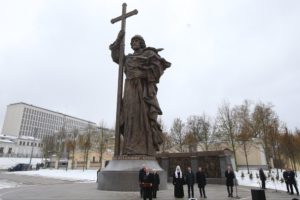
RVIO, whose chairman turns out to be the very same Medinsky, embodies both the continuity of historical propaganda forms (its very name emphasizes a link with the pre-revolutionary “military-historical society,” founded in 1907), and a model of “public-private partnership,” in which patriotically-oriented cultural policies show themselves able to attract private sponsorship. So, alongside high-level officials, the “Society” includes among its trustees a group of powerful businessmen. Private contributions to patriotic cultural policies appear here in both the category of the virtue of civic participation and long-term investment.
The Crimean Consensus and ‘Cultural Sovereignty’
In 2014, after the annexation of Crimea and the beginning of political confrontation with the West, a new stage of the Russian swing to conservatism emerged. From the very beginning, events in Ukraine appeared as not only an international political challenge, but a direct threat to Russia’s domestic stability. In accordance with officially adopted anti-revolutionary conspiracy discourse, the danger of a “regime change” was linked with the importing of “mendacious values”, which destroyed the unity of state and society. This hidden internal aggression can be opposed only by a morally healthy nation in which the arbitrariness of individual or group interests is overcome through a commonality of unifying principles. Unity in the face of threat, affirmed through ethics and culture, constituted both the justification for curtailing social expenditure and a general policy of “economic austerity”, imposed by the Russian government in conditions of international sanctions and deepening economic crisis.
The demonisation of a destructive “export of revolutionary technologies” provides universal arguments against any local social protests, with the intrigues of internal enemies being given as authentic justification. In accordance with the decree on the “Foundations of state cultural policy” adopted at the end of 2014, the vulnerability of the country in the face of internal conflicts is linked with the possibility of a “humanitarian crisis”, which is characterised by a “devaluation of generally accepted values”, the “deformation of historical memory”, and the “atomisation of society”.[xiii] The threat of such a crisis can become real if a culture is still understood not as an “integral part of the strategy of national security”, but as a sphere in which individual artistic ambitions are realised. However, in principle, in the sphere of culture the state acts not as a disciplinary and punitive force, but as a rational client, whose decisions are determined exclusively according to personal interests. Patriotism, moral values and unity in the face of enemies – these are the sole qualities, which the state demands of producers of culture. The logic is simple: if the works do not meet the needs of the state, then it will decline to pay for them.
State interest in culture as one of the key instruments of ensuring security not only does not contradict the neoliberal ethos of “effectiveness” but, on the contrary, it finds here a natural internal fulfilment. One element affirming this construct is the idea of competition, which determines the attitudes of the state as well as of individuals. Characteristically, culture in the “Foundations” is perceived as a resource, which, like natural wealth, is advantageous for Russia in the natural state of struggle of world powers for influence.
In his programmatic article “Cultural Sovereignty”, Sergei Chernyakhovskii, a member of the conservative, pro-government “Izborskii club”, defines culture as “a space for the competition of information and ideas”, and state politics in the sphere of culture as a part of global competition for resources and influence.[xiv] Resorting to the rhetoric of denouncing the “soullessness” of the West and its “consumer society”, Chernyakhovskii sees these as principles with which it is necessary and fitting to compete. In a paradoxical way, true values must overcome false ones not only by the strength of their substance but also via quality of form. The concept proposed by Chernyakhovskii is founded on the struggle for quality: “primitive” Western “mass culture” must be confronted by Russian “mass culture of a high standard”. Minister Medinsky expressed this market equivalent of a battle of civilizations in a clear formula: “a cultural, ideological attack can be countered in the same way as always – with a quality product.”[xv]

The time-proven quality of high Russian culture is bound to educate the nation which in turn affirms its accordance with national “spiritual values” by buying massive numbers of tickets for exhibitions and performances. An example of combining “high culture” and commercial success in this way can be seen in exhibitions of the classics of Russian art (such as Valentin Serov and Ivan Aivazovsky) at the State Tretyakov Gallery. Serov’s exhibition, on from October 2015 to February 2016, had almost half a million visitors. Part of the publicity campaign for the exhibition was a special visit by President Putin.
In Medinsky’s words, Serov’s exhibition bore witness to the “psychological phenomenon” of the “limitless attraction of art for a Russian”, regardless of “crises or sanctions”.[xvi] Classical Russian art stands out for its power of national consolidation, uniting nation and government, higher and lower classes, owing to their common aesthetic and moral convictions. This is a historically-proven, guaranteed investment in “the mass culture of high models”, the triumph of the will of the majority, empirically expressed by the masses of ticket-buying visitors.
Here, genuine democracy resists inauthentic pluralism, signified by a right to the equal representation of absolute cultural values and the warped experiments of aesthetes who are distant from the people. Questionable experiments in the sphere of contemporary art not only threaten “cultural sovereignty”, but also directly damage the state.
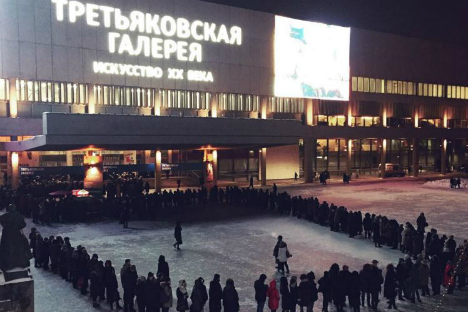
Conservatives in the Battle for Resources
In this context, moral arguments constitute an important weapon in the struggle for the redistribution of state resources. Significant in this regard was the exhibition “Na Dne” (The Lower Depths), organised by the “Art without Borders” Foundation, which is close to the ruling United Russia party. This exhibition consisted of a series of photographs taken from performances at a number of state theatres that challenged “traditional values” in a variety of ways (nudity, acts of violence, or profanation of Christian symbols). Each photograph was accompanied by precise figures giving the amount of state support received by the show in question. The shocking effect that this exhibition was supposed to have on the viewer was contained in the contrast between the scale of lost resources and the lack in meeting the needs of the majority in a similar art form. The organisers of the exhibition positioned themselves not only as adepts of “traditional values” but also as concerned consumers and tax payers who do not wish to support art that contradicts their moral convictions.[xvii]
Public actions or legal suits against various exhibitions or shows, initiated by groups claiming to act in the name of an offended “moral majority”, are more and more often accompanied by proposals for an alternative distribution of budgetary resources. In fact, protests in the name of the “moral majority” constitute part of the “competition of artistic projects”, to which functionaries of the Ministry of Culture constantly appeal. For example, at the beginning of 2015, on the wave of anti-Ukrainian hysteria, having received state funding, a programme to create a network of centres of “innovative culture” transformed itself into an idea for patriotic clubs, oriented towards the propaganda of “traditional values of patriotic culture” and a “wholesome life approach”. A group of conservative cultural activists, effectively hijacking this project, stated frankly that the former concept of “innovative culture” was ideologically alien and instead of educating loyal citizens, it produced the future participants of “Maidan”.[xviii]
The National Centre for Contemporary Arts (NCCA)—an organisation created back in the 1990s to support contemporary artists and traditionally characterised by its independence and spirit of pluralism—also faced attacks on the part of conservative lobbyists at this time. Despite its profile, the NCCA was in fact wholly financed by the Ministry of Culture, managing to create a group of important cultural centres in several regions of Russia. One of the most notable of these was the NCCA branch in Nizhny Novgorod, located in the enormous historic Arsenal building in the very centre of town. After the first exhibition was held there, almost immediately a picket of “offended citizens” appeared at its walls. Behind the protests against the exhibition was a patriotic organisation: “Great Fatherland”, proclaiming its main task to be the “battle against a repetition of the Ukrainian scenario in Russia”. Its leader, the odious writer-composer Nikolai Starikov, produced an extensive article in which he exposed the leadership of the Nizhny Arsenal as direct agents of Western influence.
Nevertheless, the main conclusion of this piece was by no means a call for repressions – Starikov was concerned primarily with the question of the fate of the building in which these outrageous exhibitions were taking place. For the protection of state interests he proposed to the Ministry of Culture and local authorities that the Nizhny NCCA property should be handed to people who could fill it with “images and ideas directed towards the dignity of the Russian nation”.[xix] Despite the fact that this proposal remained unanswered, the NCCA as an institution continued to be subjected to attacks from conservative critics. In 2016, the Ministry of Culture carried out a restructuring of the NCCA as a result of which it lost its independence and was combined with another state cultural organization, ROSIZO. The resulting institution is now led by a former functionary of the ruling United Russia party.[xx]
One recent striking manifestation of patriotic lobbying was the establishment of the Russian Art Union, in May 2017. The new organisation, whose main public leaders are the writer Zakhar Prilepin and the theatre director Eduard Boyakov, see their task to be the struggle for “traditional values” in the cultural sphere. Prilepin openly declares that there is disproportionate state support for projects not serving the interests of the majority. In Prilepin’s opinion, the state in its inertia was continuing to support art that not only directly opposes the interests of Russia but also turns out to be financially unprofitable. Increasing budgetary support for patriotic culture would correspond to the “principles of democracy”, that is, it would respond to the tastes and convictions of the majority of the population.[xxi] In practice, immediately after the establishment of the Russian Art Union, Prilepin and Boyakov were received by Minister of Culture Medinsky who assured them of his support for their initiative.[xxii]
It can be ascertained that from the beginning of the “swing to conservatism” in 2012, the discourse of “traditional values” was completely absorbed into the logic of “creative projects” taking part in the competitive struggle for public funding. The objects of attacks are precisely those who also take part in the mechanisms of funding distribution. For example, in May 2017, a deputy from Crimea, Natalya Poklonskaya, known for her conservative and monarchical views, submitted an official request for a tax inspection of the production of the film Matilda, which was due to appear on screens in the autumn of that year. The film portrays the love affair between the young heir to the Russian throne, the future Nicholas II, and a ballerina from the Petersburg Marinsky theatre. Ignoring the fact that the film had received state support, or that its director, Aleksei Uchitel was known for his loyalty to the political direction of the Kremlin, Matilda became the object of criticism from conservative groups. From their point of view, the image of Nicholas II, officially recognized as a saint according to a decision of the Orthodox Church back in 2000, would be discredited by the portrayal of his premarital affair. All the same, deputy Poklonskaya, repeatedly criticising the film, chose to attack it using the argument of financial opacity.[xxiii]
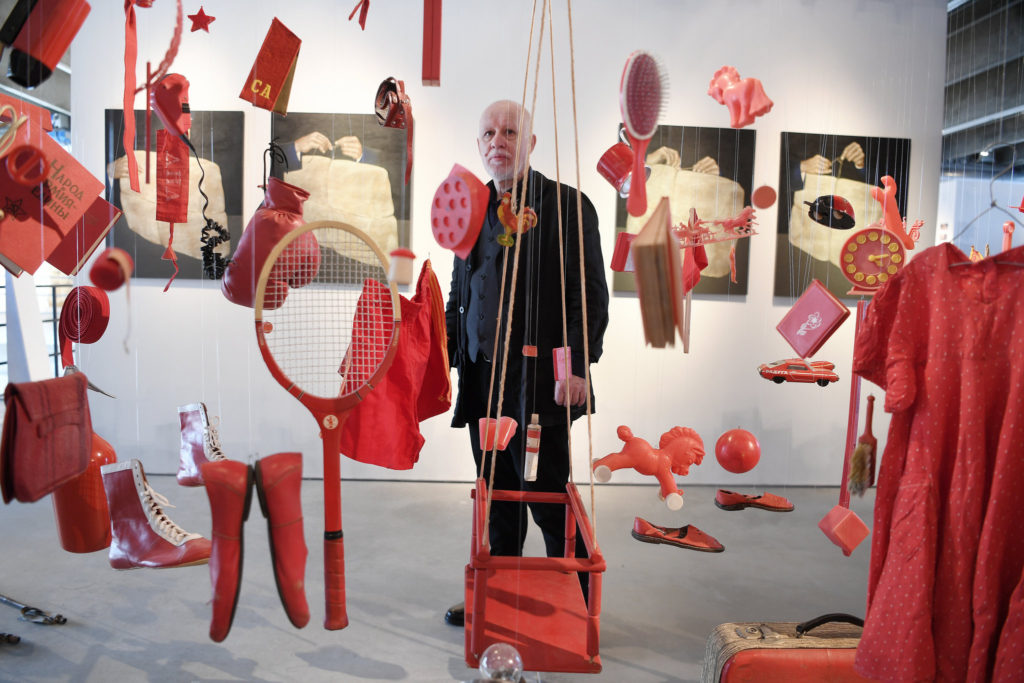
At the same time, against this kind of background, private institutions – museums or theatres – look like oases of freedom and experimentation, restricted only by problems of self-sufficiency or the preferences of their owners. Thus, the centre for contemporary art “Garage” or the Victoria Foundation (which recently opened its own gallery in the centre of Moscow) has not experienced the obvious pressures of censorship or public attacks from patriotic lobbyists over the last few years. Their exhibition policy goals correspond to the standards of Western private galleries (although there are attempts to avoid the most provocative themes, capable of triggering complaints on part of the police or the Orthodox Church). It may seem that the practice of these institutions completely conforms to the place allotted to them by the conservative wave: the preserve of a minority where it can satisfy its own aims alien to the cultural needs of the nation, and not on the state’s dime.
However, in this capacity they present not an alternative to the state, but an organically composed neoliberal model of “cultural economics, or culture organised like economics”.[xxiv] In the existing hegemony, the place of contemporary art is determined by a constantly growing social inequality, a current abyss between the majority of the population and a decreasing metrolopolitan middle class: if the cultural preferences of the former are voiced by a conservative state, then the critical stance of the latter looks legitimate only thanks to their buying power. The opposition between state and private cultural spheres in actual fact becomes a loss across the whole expanse of culture, which differs from the logic of the market.
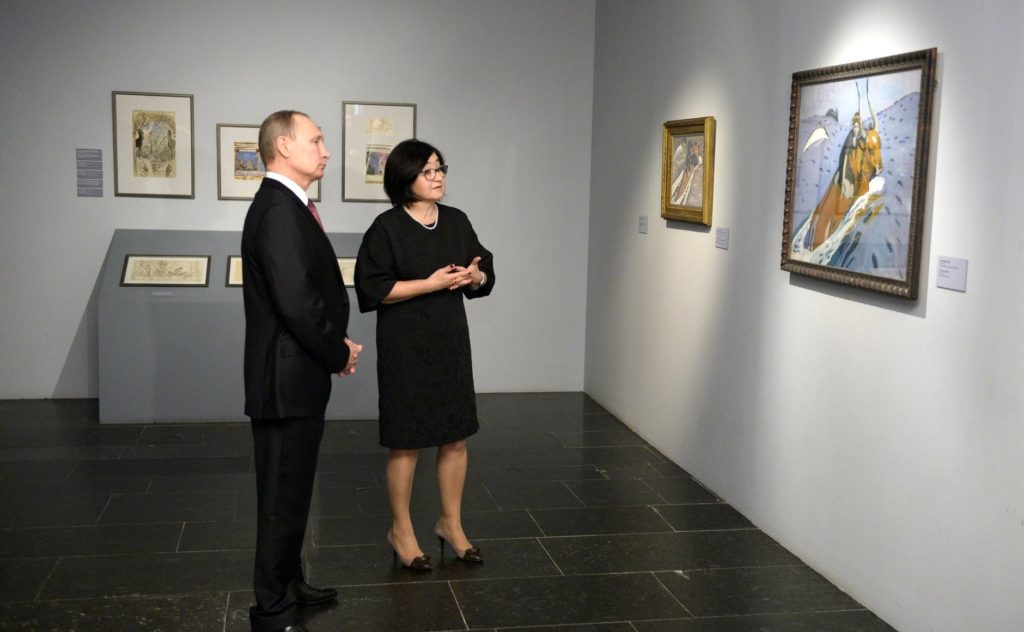
Corporate Solidarity and the Subjectivity of Cultural Employees
In this context, the principal issue becomes the subjectivity of cultural workers, their capacity for self-organisation and reflection on their own social position. One could say that today in Russia elements of such self-organization in the sphere of culture are characterised mainly as a reaction to direct repressive challenges by the state, without affecting the actual foundations of the hybrid model of neoliberal-conservative politics described above. Thus, the artistic community quite actively took part in a campaign of solidarity with the arrested members of Pussy Riot or the struggle to free Pyotr Pavlensky (after his well-known action at the headquarters of the Federal Security Services in Moscow in November 2015). These campaigns were motivated fundamentally by the demand for freedom of artistic expression, which cannot be evaluated according to political or moral criteria (and accordingly be the object of criminal investigation).[xxv] Such an approach generally reproduced the pattern familiar from Soviet times of conflict between the repressive state authorities and the heroic individual, confronting conditions of social un-freedom. In the framework of this approach state and society appear as a uniform grey mass, forming a background to an absurd “kafkaesque reality”, and opposition to it was exclusively moral in character.[xxvi]
This reduced picture of reality, continually reproduced by cultural sphere activists, paradoxically does not enter into serious conflict with the fundamentally mendacious conservative cultural politics of an ideological figure claiming the organic unity of nation and government. Despite impressive examples of self-organisation, these campaigns are not based on active doubt in the fixed character of conflict between a social minority, interested in artistic freedom, and the majority, silently supporting a repressive response on the part of the state. It turns out that the rights of the critical artist are defended only by those who are interested in their existence (completely in accordance with the cultural theory of Medinsky).
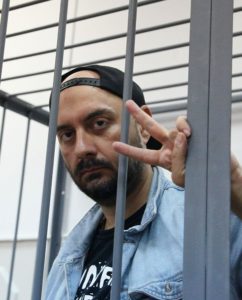
Another example of this contradictory position can be seen in the situation surrounding the raids and arrests at the Gogol-Centre Theatre in Moscow, which took place on 23 May 2017. The main suspect, the famous director Kirill Serebryannikov, had in recent years become the benchmark for successful management in the sphere of culture. It is notable that in 2012 Serebryannikov was appointed by the Moscow authorities as director of the Gogol-Centre Theatre as the previous leadership and company were dismissed in response to the theatre’s low attendance rate (that is, its “inefficiency”). An experimenter and opponent of “forbidden themes” in the theatre, Serebryannikov nevertheless managed to skilfully integrate himself into the circumscribed model of cultural politics: his productions at the Gogol-Centre were popular with the young, educated and well-off Moscow public and demonstrated high levels of attendance. It is in this sense that the characteristic retrospective evaluation of Serebryannikov in the Russian liberal media appears: “the director’s work and that of his theatre in recent years served for many as a space of internal emigration, an escape from increasingly persistent mass cultural trends with their emphasis on blind statism.”[xxvii]
The reason for interrogating Serebryannikov (as a witness) was the charge of misappropriation of funds granted to him by the Ministry of Culture for a creative project. Even if we are to assume that this criminal case turns out to be a falsification, there is little doubt that its cause is in some way or other tied up with the position of Serebryannikov in a state cultural institution and reflects a change of balance of power in the struggle for the distribution of resources. As a representative of the liberal flank, Serebryannikov showed himself to be vulnerable in conditions of increasingly severe competition in the cultural sphere. This was instantly evaluated in moral categories, the pressure of “an atmosphere of fear” and a return to the time of mass Stalinist repressions. Well-known actors and directors, coming out in defence of Serebryannikov, while familiar with the internal situation in the cultural sphere, thus reveal themselves also as its players.[xxviii]
However, their strategy of defending Serebryannikov turned out to be completely determined by corporate solidarity. Declarations of support for the director did not reveal the real attitudes of the competition behind the prosecutions, but presented it exclusively as a question of censorship and an attack on creative freedom. Thus, the well-known cinema director Andrei Zvyagintsev in his emotional piece characterised the persecution of Serebryannikov as “a blow to freedom of thought in all areas – from political thought to current thought in the area of art”. Behind this blow stands the ill will of the authorities, based on the “archaic consciousness” “of traditionalists, which a huge part of the country reveal themselves to be”.[xxix] In accordance with the logic of Serebryannikov’s defence campaign, his work should not be appraised according to political criteria or moral motives, but should instead be a public acknowledgement of his talent and the popularity of the theatre he has headed. In this way, the very model of culture as a sphere of competition not only fails to be called into question, but is unconsciously reproduced.
Rooted in the Russian intellectual tradition, the dispute between “Westernisers” and “Slavophiles” is today transformed in the cultural sphere into a competition between “projects” that aspire to acquire public or private funding. In this capacity, the conventional “Western” cultural project is based on ideas of experimentation, is sexually emancipated and hostile to the “archaic consciousness” characteristic of both the state and the majority of society. Its performances make it a target for criticism from the standpoint of “cultural sovereignty” and make it vulnerable in the struggle for public funding, while at the same time attracting the sympathy of the educated urban middle class, for whom involvement in such art symbolises belonging to “the contemporary”. This quality of “modernity”, acquired via culture, represents an important competitive advantage in professional self-realisation for the educated middle class.
Contemporary art also continues to present the most successful examples of “public-private” partnership, and also helps to build up Russia’s international image as a developed country that permits criticism and pluralism in the sphere of the arts. One could say that despite conservative criticism of the liberal-elite line, the Ministry of Culture continues to financially support both directions—the conservative and the liberal—whose co-existence and competition ensure the production of cultural products that can be consumed by various social groups. The situation in which the social institution of art itself is transformed into a powerful means of political division of society into a “moral majority” (organically connected with the authorities through shared values and traditions) and a “minority” (asserting its cultural superiority over the majority), is completely in the interests of the ruling elite.
The attempt to question the neoliberal model of culture itself, as well as the political manipulations based on it, could proceed from a re-examination of the position of cultural workers as subjects of the capitalist economy. Such a formulation of the question could make cultural issues part of the agenda of the movement for social and labour rights, including employees in other fields. To date, examples of self-organisation of cultural workers, centred on criticism of inequality and competition, have been exceptionally rare in Russia.
In this regard, we should mention the promising, though ultimately inconsequential initiative of the conference of cultural workers in May 2010, in which about a hundred artists, writers, and academic researchers took part. The Congress’ programmatic declaration stressed the need to “be in solidarity with the whole spectrum of struggle against the exploitation of unprotected labour – let’s say ‘hired labour’ in factories or supermarkets”.[xxx] It is noteworthy that after the Congress had finished, its participants went out in a column of their own for the 1st May trade union demonstration. The further decline in activity of the Congress was connected not only with the complexity of self-organisation for cultural workers, many of whom were not in continuous employment, but with the general crisis in Russian social movements and independent unions in recent years.
Today, Russia is gradually entering a period of political turbulence, which makes the prospect of the rise of a mass civil movement very real. Inevitably, the issues at the centre of such a movement will concern not only fighting corruption or defending citizens’ rights, but also the all-important problem of colossal social inequality. This means that in conditions of social upswing, there will inevitably be a growing interest in a variety of alternatives to the very model of Russian post-Soviet capitalism, with its specific combination of authoritarian political practices, conservative ideological hegemony and neoliberal principles of state and business. In such a situation, the cultural sphere, able to critically evaluate its own place in society, can become an important space for discussion of social alternatives.
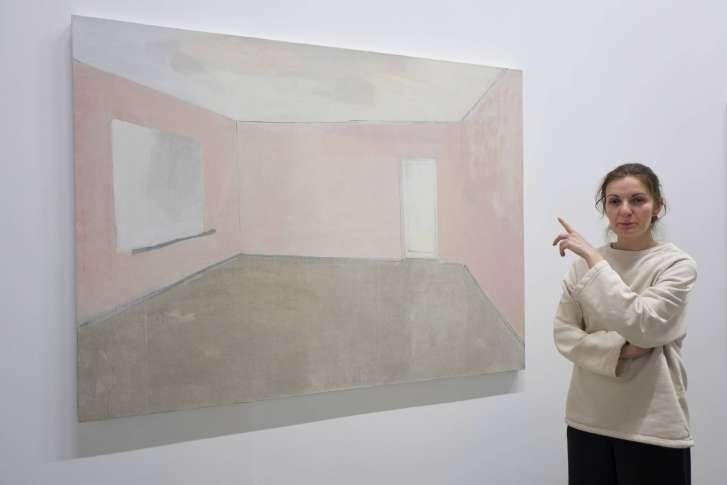
- [i] This idea is, for example, one of the main theses of the expert paper: ‘Post-Truth, Post-West, Post-Order?’, presented at the Munich security conference at the beginning of 2017. https://www.securityconference.de/en/discussion/munich-security-report/
[ii] Основы основ. О смыслах государственной культурной политики [Foundations’ foundations. The meaning behind state cultural policies]. Комментарий Института им. Лихачева. http://mkrf.ru/info/foundations-state-cultural-policy/
[iii] For example, on the paradox of Russian authoritarian neoliberalism: I. Matveev, “Неолиберализм с российскими характеристиками” [Neoliberalism Russian style], Open Democracy, 24 March, 2016, https://www.opendemocracy.net/od-russia/ilya-matveev/rossiya-inc
[iv] Text of Vladimir Putin’s speech at the Moscow meeting, 23.02.2012 https://ria.ru/vybor2012_putin/20120223/572995366.html
[v] The circumstances of this appearance are described, for example, by Julia Ioffe’s piece, “Pussy Riot v. Putin: A Front Row Seat at a Russian Dark Comedy”, New Republic, 5 August 2012, https://newrepublic.com/article/105846/how-punk-rock-show-trial-became-russias-greatest-gonzo-artwork
[vi] Il’ya Kalinin. Праздник идентичности. Культура как новая национальная идея [Festival of Identity culture as the new national idea]. Неприкосновенный запас [Emergency Rations] no. 101(3/2015) http://www.nlobooks.ru/node/6379#_ftnref17
[vii] In 2016, a group of eminent Russian historians, members of the Academy of Sciences, made an appeal for Vladimir Medinsky to be stripped of his doctorate of historical sciences. The basis for this demand was the presence of plagiarism, incorrect research methods, and also Medinsky’s adherence to the ‘pseudoscientific’ view of the precedence of historical myth over fact. Open address: «О методах научного исследования и диссертации В.Мединского» [On the scholarly research methods in the dissertation by V. Medinsky] http://www.1julyclub.org/node/122
[viii] V. Medinsky. Особенности национального PR. Правдивая история Руси от Рюрика до Петра [The peculiarities of national PR?]. OLMA, Мoscow. 2011. – с.19?
[ix] Interview with Vladimir Medinsky, Izvestia, 17 June 2015, http://izvestia.ru/news/587771
[x] Valerii Gerasimov. Ценность науки в предвидении [The value of scholarship with foresight]. http://www.vpk-news.ru/articles/14632
[xi] More information on the programme of monumental propaganda Military-historical Society can be found here: http://rvio.histrf.ru/activities/monumentalnaya-propaganda
[xii] It is noteworthy that the notion of efficacy and market competition as the fundamental driving force of Russian history was also adopted by the Patriarch of the Russian Orthodox Church, Kirill. Thus, in his speech marking the unveiling of the monument to St Vladimir, he declared: “Prince St Vladimir approached the question of choosing a faith very pragmatically: he sent his envoys to find out where and how God was served.” This is evidence of striving for the utmost honest and objective approach to the most important question – the choice of faith. http://rvio.histrf.ru/activities/monumentalnaya-propaganda
[xiii] Основы государственной культурной политики РФ [Foundations of state cultural policy of the Russian Federation]. http://mkrf.ru/info/foundations-state-cultural-policy/
[xiv] S. Chernyakhovskii. О культурном суверенитете [On cultural sovereignty]. https://izborsk-club.ru/3354
[xv] Interview with V. Medinsky. «Культурная политика должна быть яркой и убедительной» [Cultural policy should be vivid and persuasive]. AiF, 23.05.2017.
[xvi] “Мединский назвал успех выставки Серова политическим феноменом” [Medinsky declares Serov’s show a political phenomenon] http://tass.ru/kultura/2616910
[xvii] “Москвичам показали дно современного российского театра” [Muscovites shown the dregs of contemporary Russian theatre] https://www.ridus.ru/news/185588
[xviii] “Инновационные культурные центры переделают в патриотические” [Innovatory cultural centres recast as patriotic ones], Izvestia, 09 February 2015, http://izvestia.ru/news/582797
[xix] N. Starikov, “Современное искусство должно быть патриотичным” [Contemporary art should be patriotic] http://nstarikov.livejournal.com/1534239.html?thread=44477471.
[xx] “РОСИЗО подчинило ГЦСИ” [ROSIZO taken over by GTsSI], Kommersant, 25 May 2016, https://www.kommersant.ru/doc/2996137
[xxi] “Захар Прилепин против фанатов «Голубого сала” Komsomolskaya pravda, 17 May 2017, http://www.kp.ru/daily/26679/3702725
[xxii] “Прилепин и Бояков вступили в Русский художественный союз”,18 May 2017 https://ria.ru/society/20170518/1494574872.html
[xxiii] “Кремль отказался считать проверку компании Учителя «методом давления»” [The Kremlin declines to consider the investigation of the Uchitel’ company as a ‘method of pressure’]. RBK, 26 May 2017, http://www.rbc.ru/politics/26/05/2017/5927fa429a7947d007c42818?from=main
[xxiv] Aleksandr Bikbov, “Культурная политика неолиберализма” [The cultural policies of neoliberalism]. Художественный журнал [Art journal], №83 (2011). http://moscowartmagazine.com/issue/14/article/187
[xxv] After Pavlensky’s arrest 128 art experts and artists signed a diploma in which they specially attested his status as an artist. For the text of the diploma see: http://archive.is/MYRDY.
[xxvi] Direct quotation from one typical reaction to Serebryannikov’s interrogation. A. Arkhangel’skii, “Невыносимая атмосфера” [Intolerable atmosphere], Col’ta, 24 May 2017, http://www.colta.ru/articles/theatre/14905
[xxvii] “Пришли за Гоголем” [They came after the Gogol], Gazeta, 23 May 2017, https://www.gazeta.ru/comments/2017/05/23_e_10688063.shtml#page1
[xxviii] “Деятели культуры выступили в поддержку Кирилла Серебренникова” [Cultural activists come out in support of Kirill Serebryannikov], Col’ta, 25 May 2017, http://www.colta.ru/news/14920
[xxix] Andrei Zvyagintsev’s commentary on the Serebryannikov affair. https://thequestion.ru/questions/268540/chto-delo-serebrennikova-znachit-dlya-vsekh-nas
[xxx] The manifesto of the May Congress of cultural workers. https://maycongress.wordpress.com

